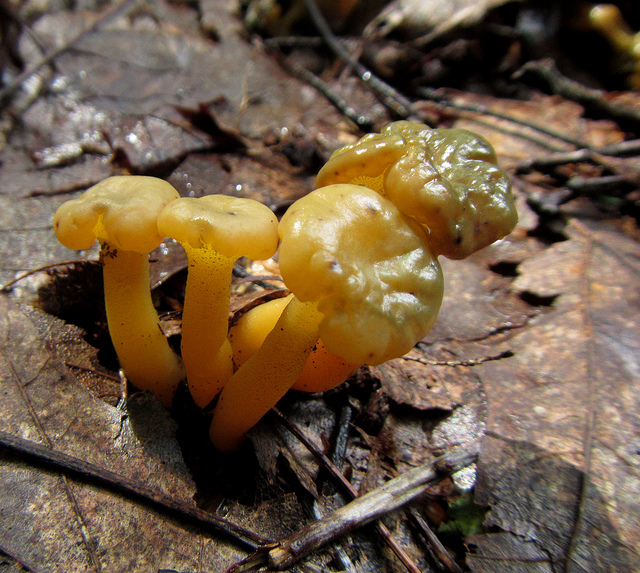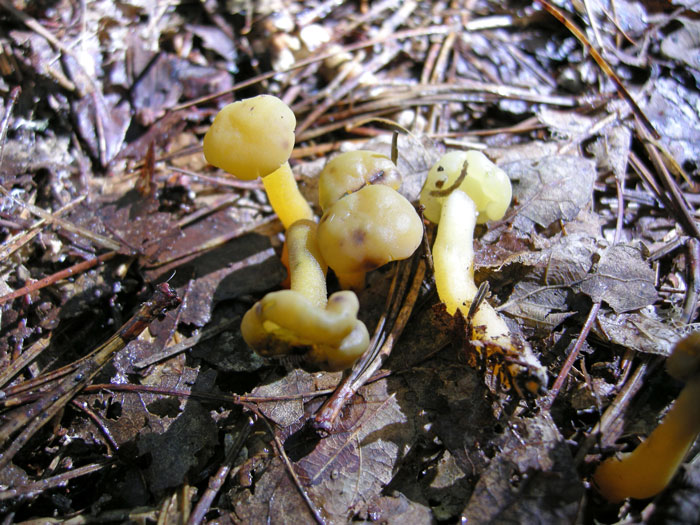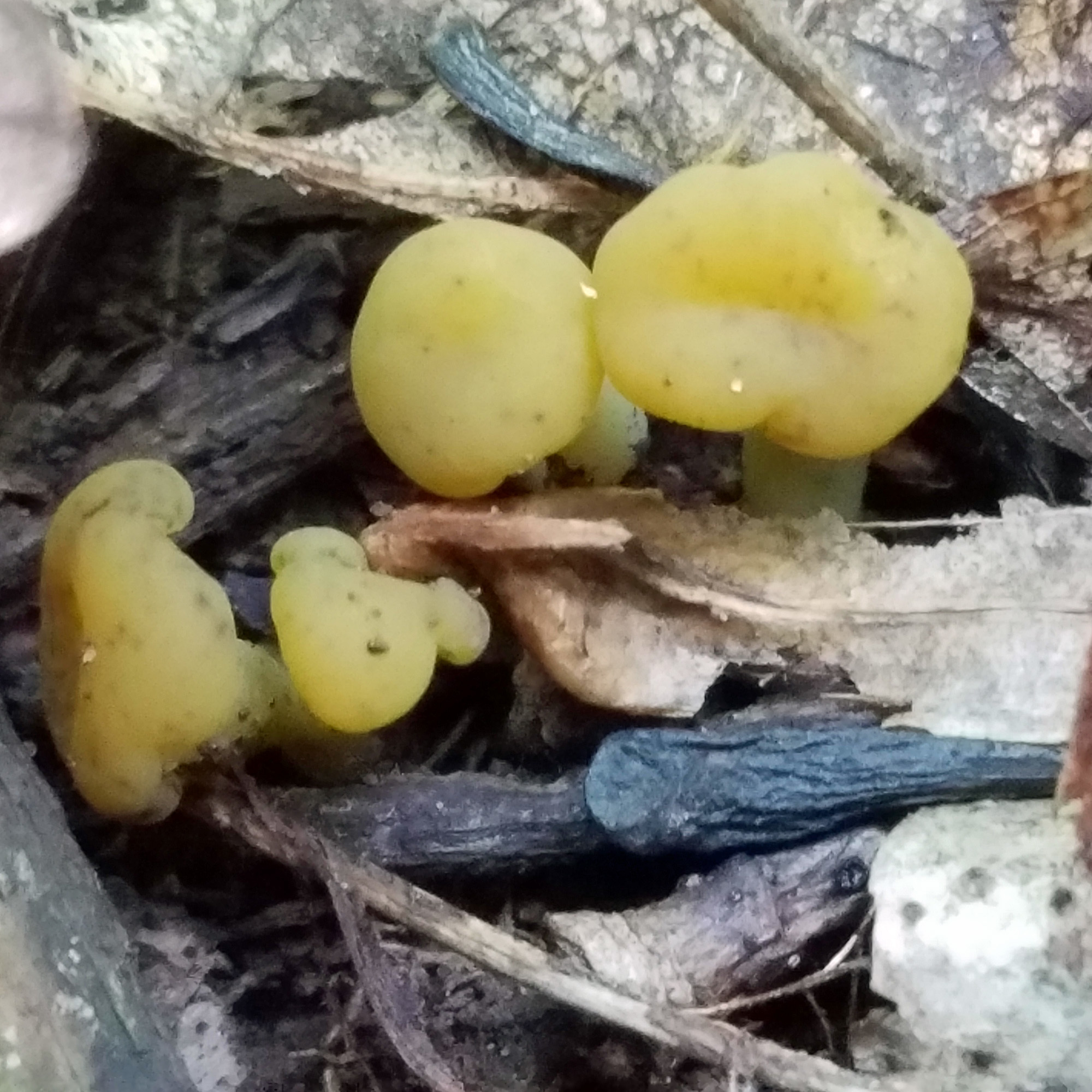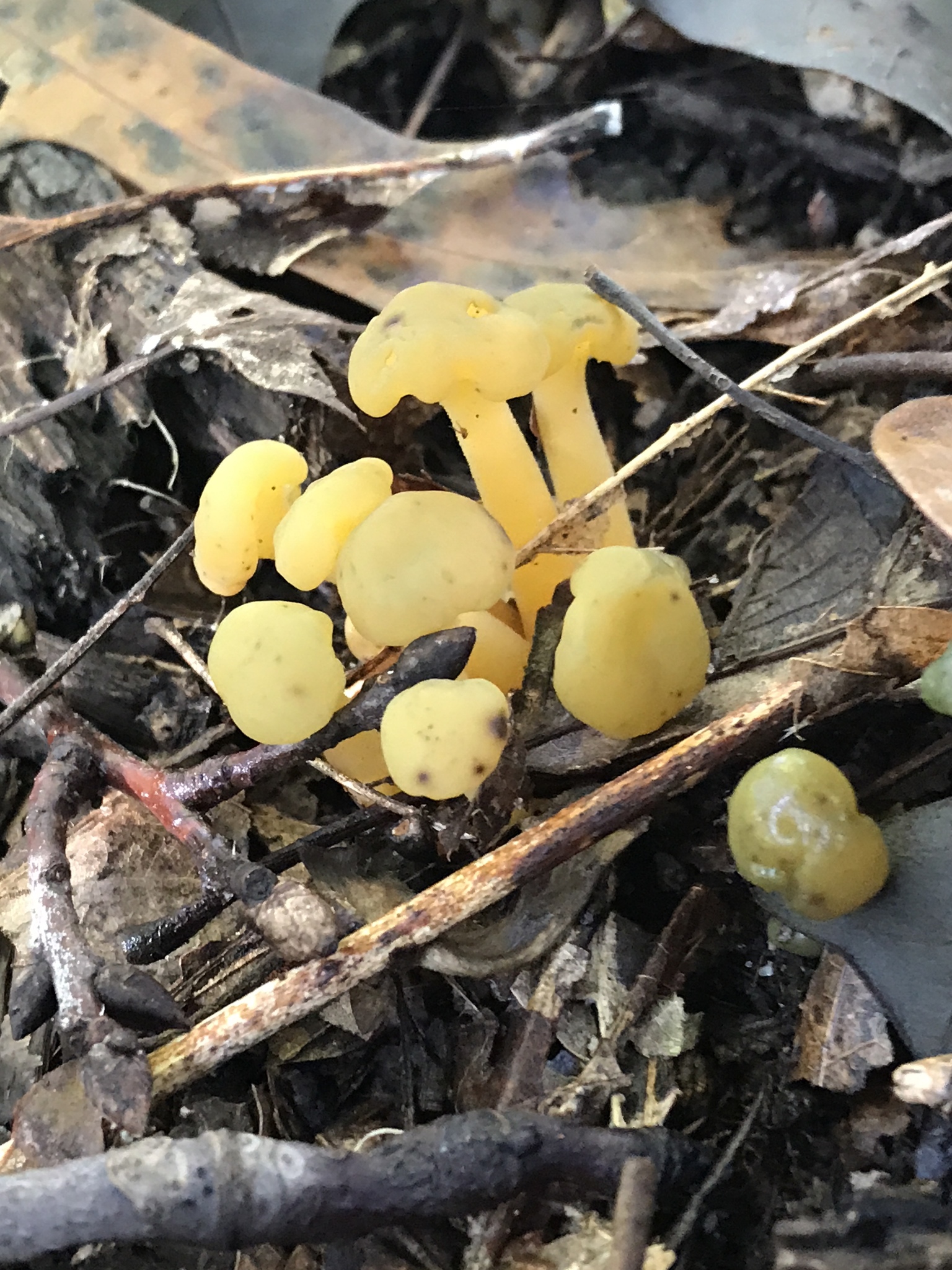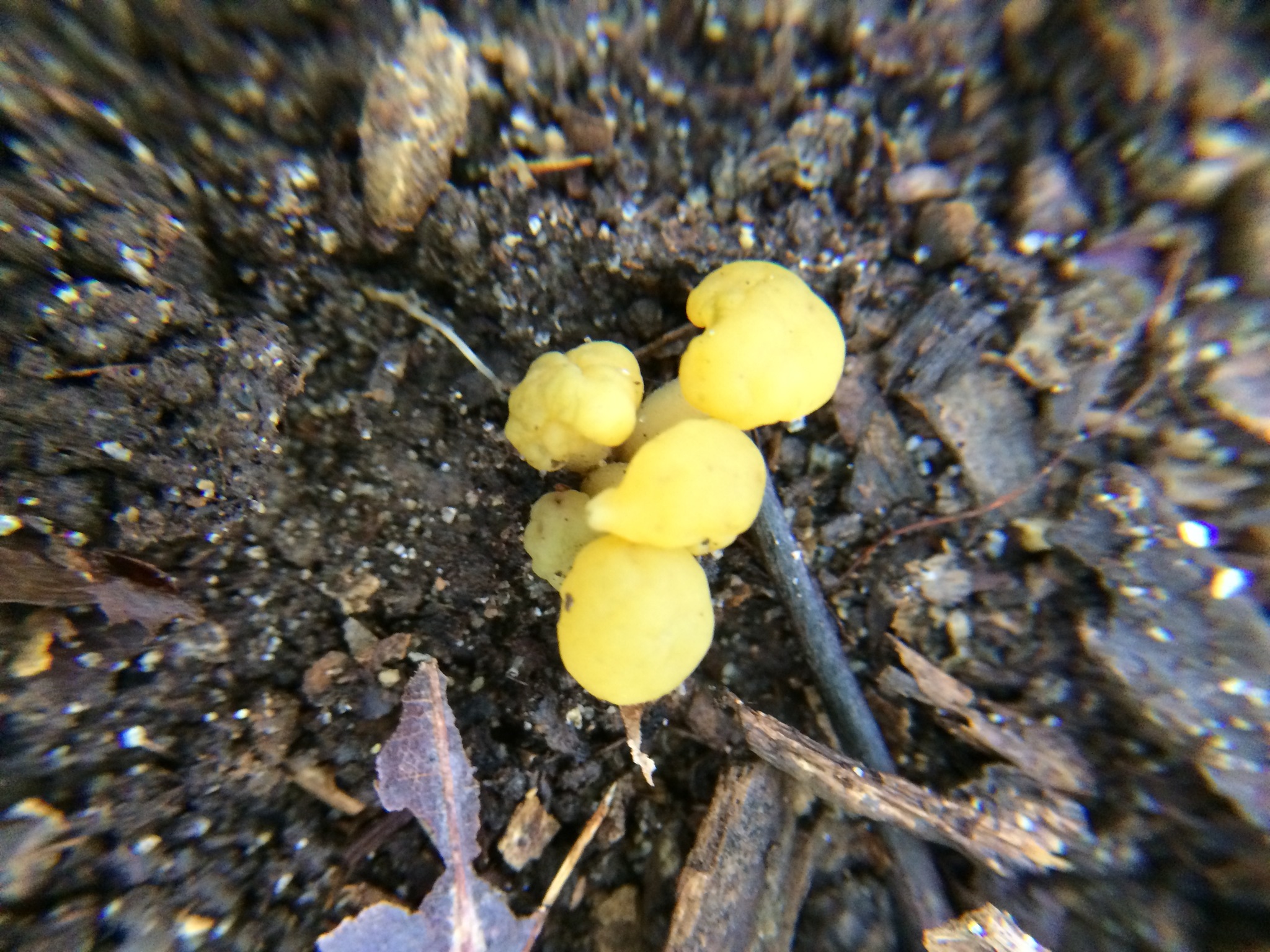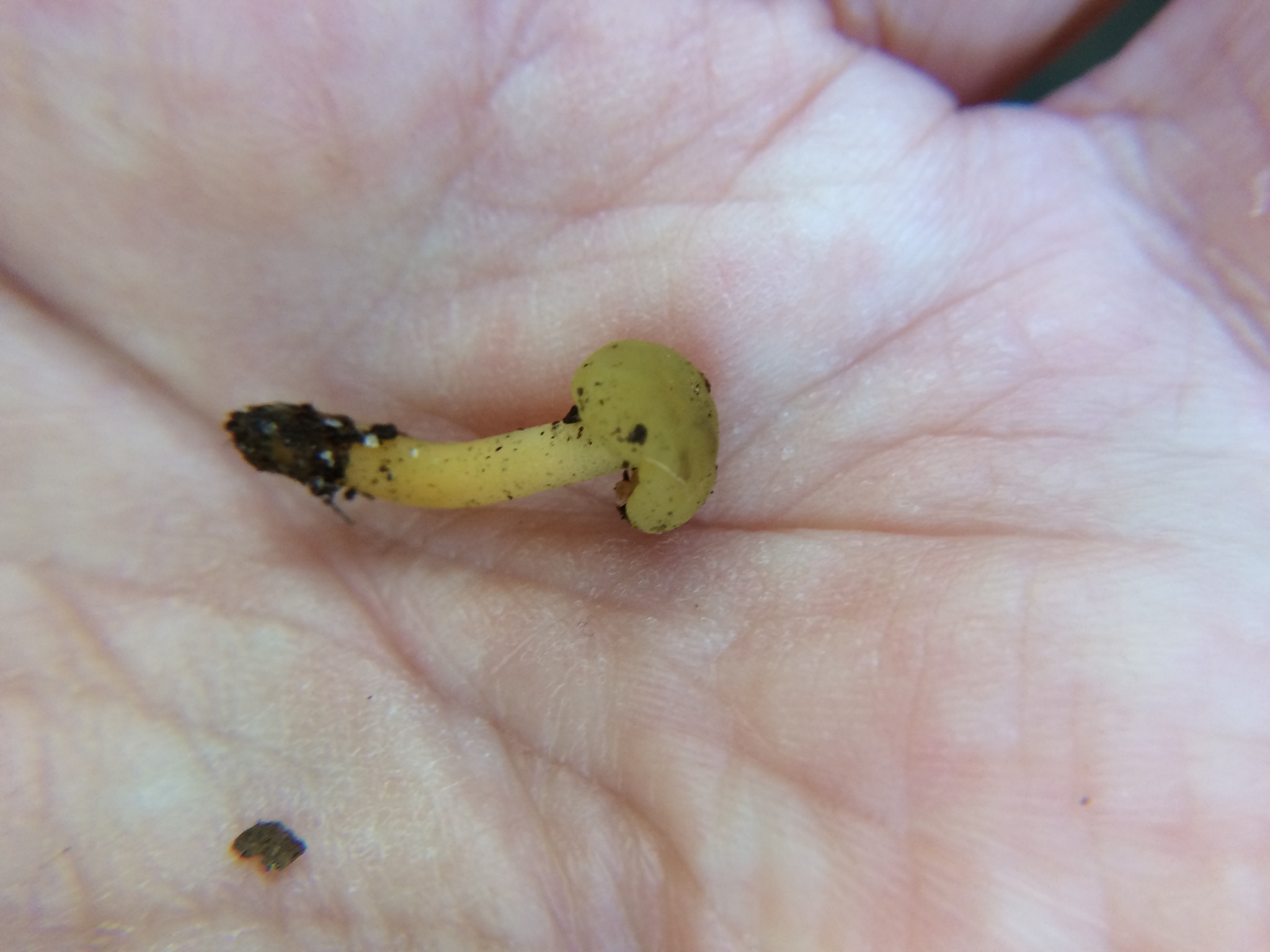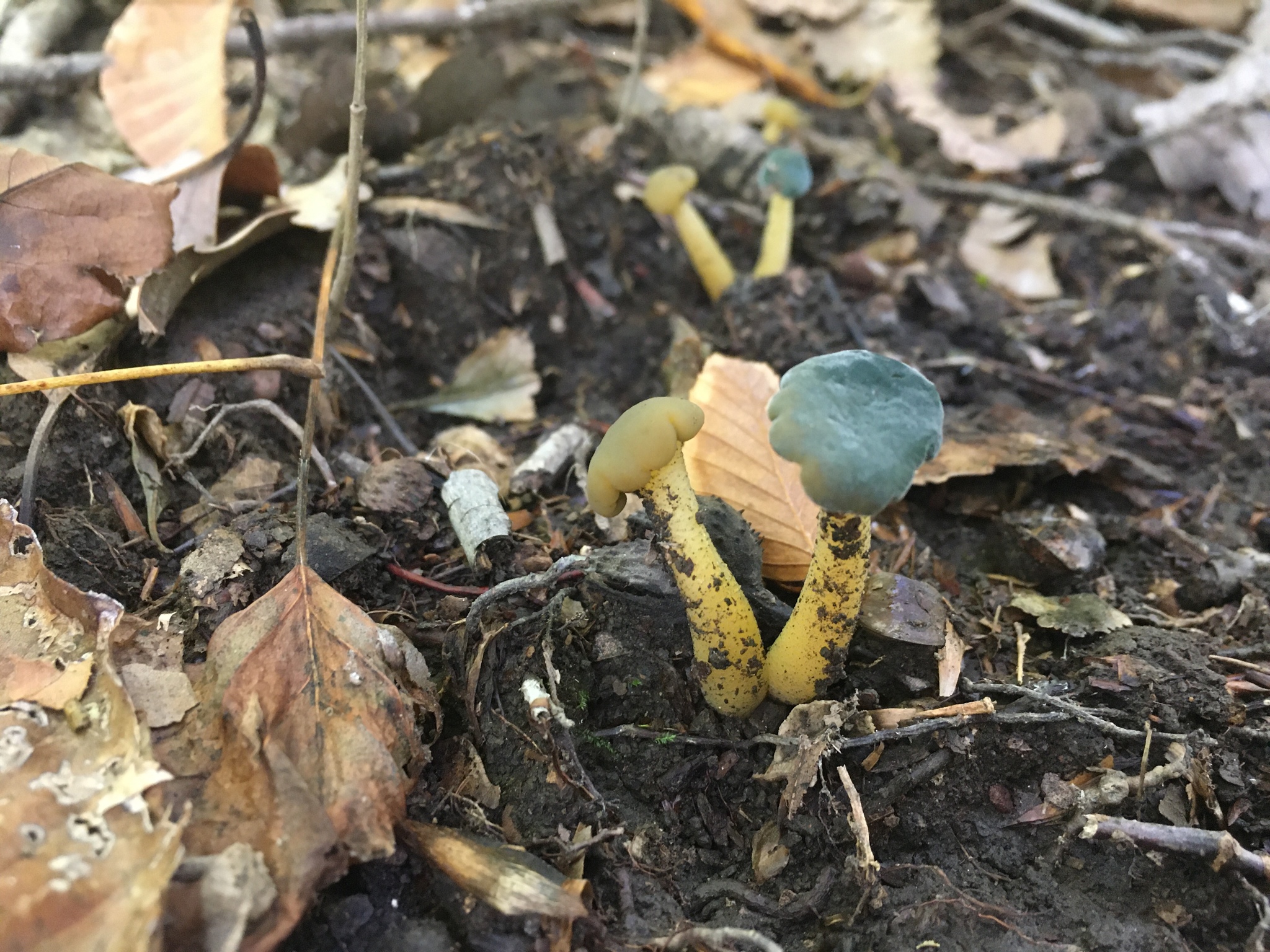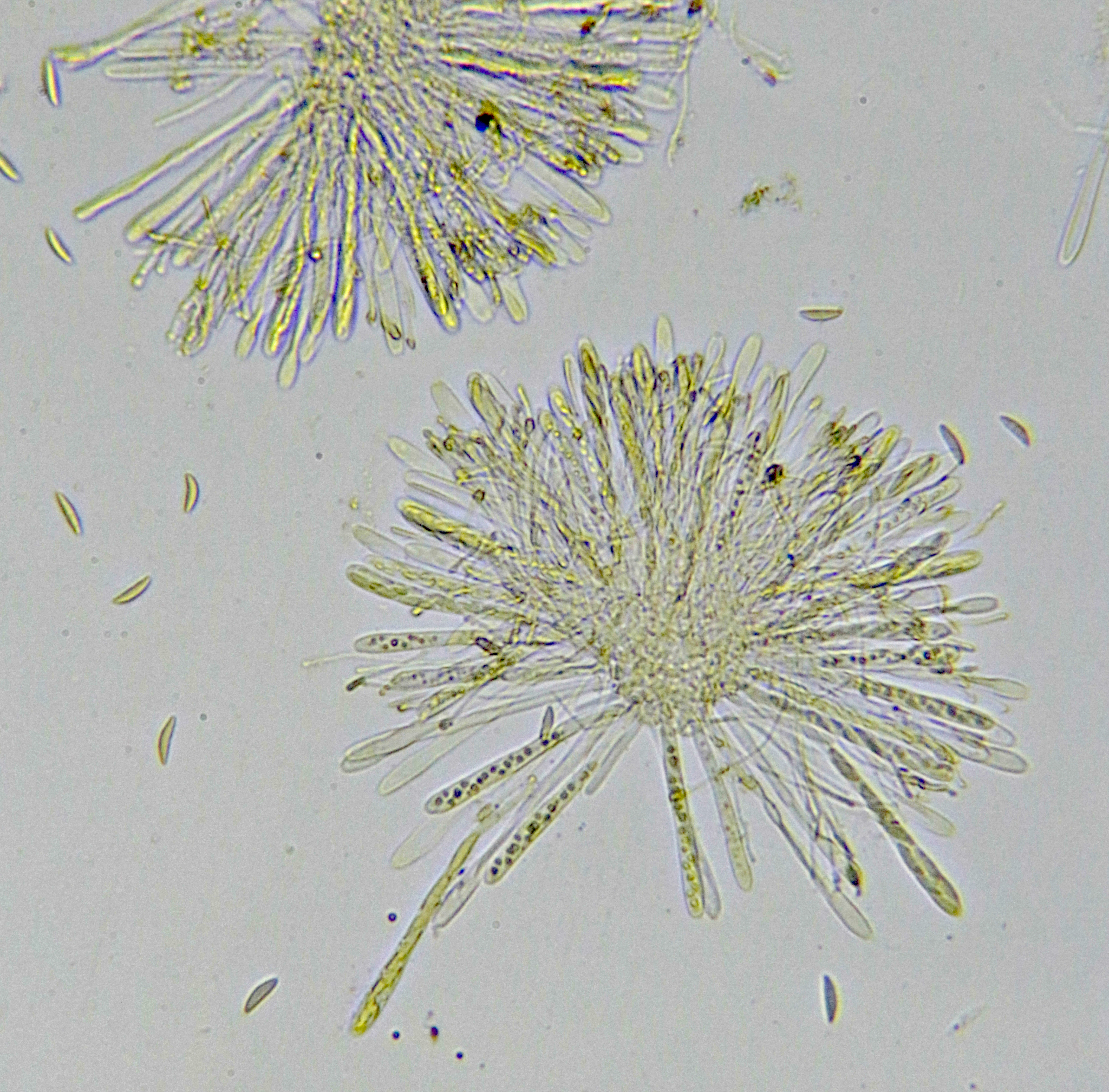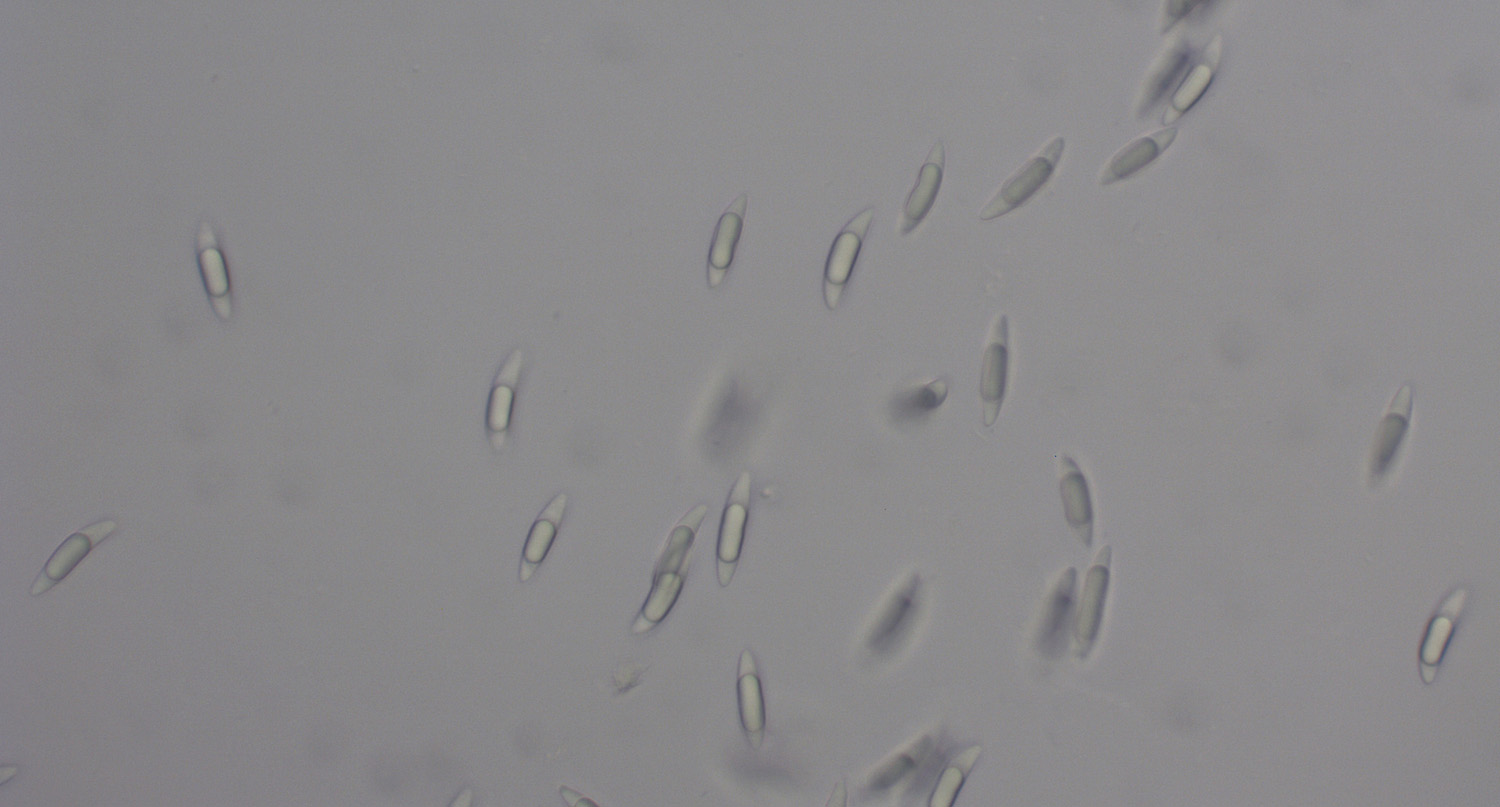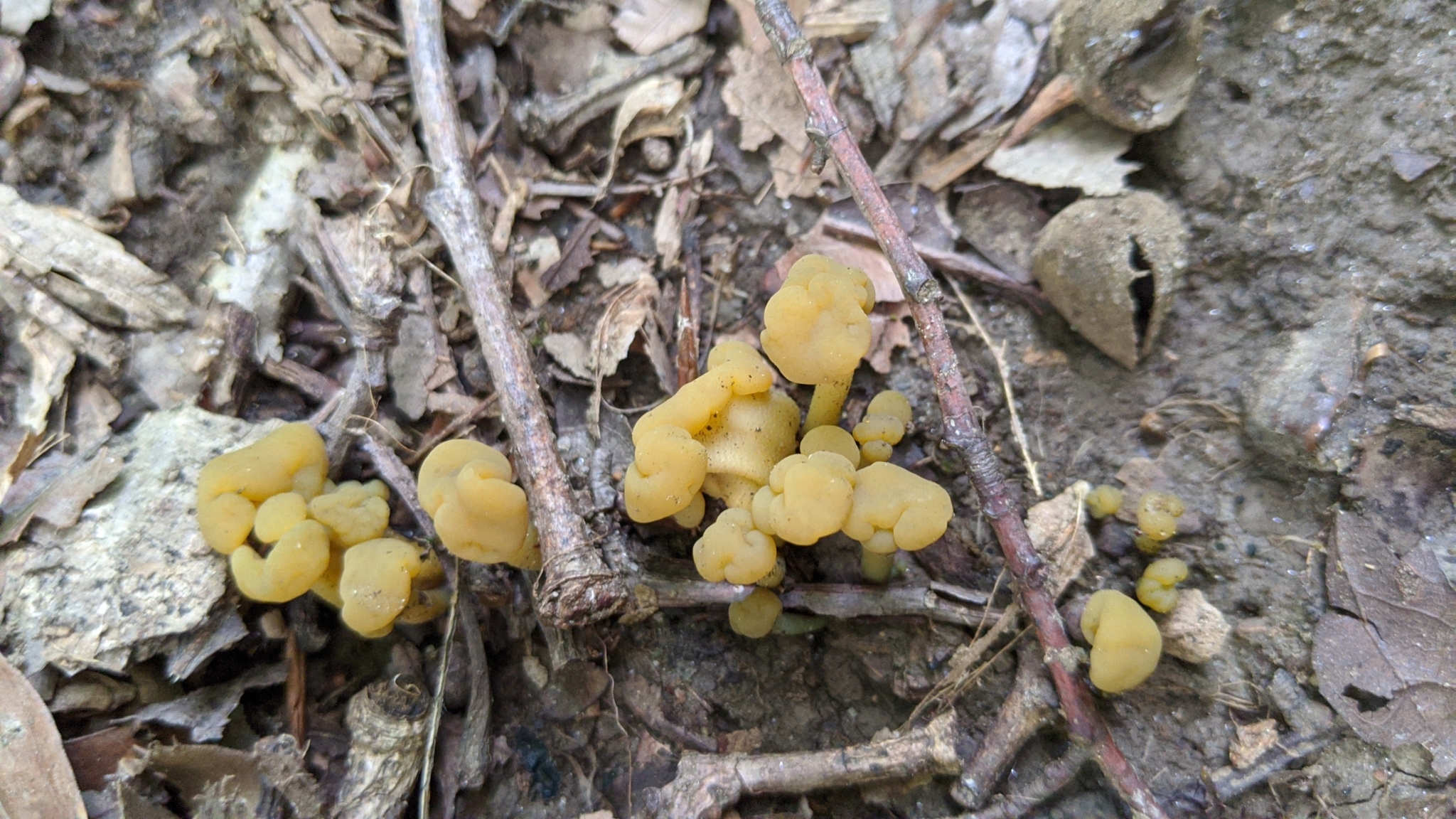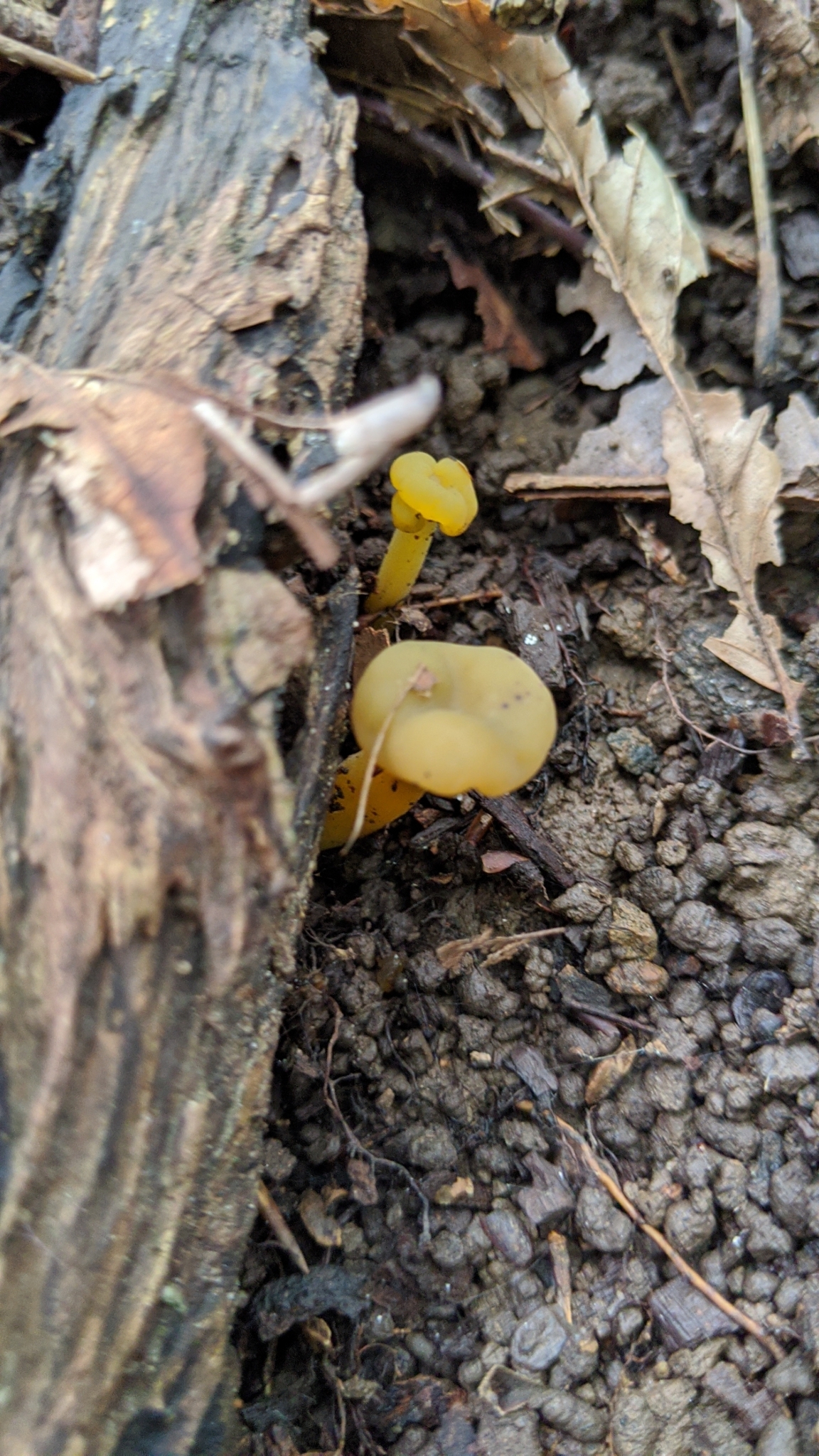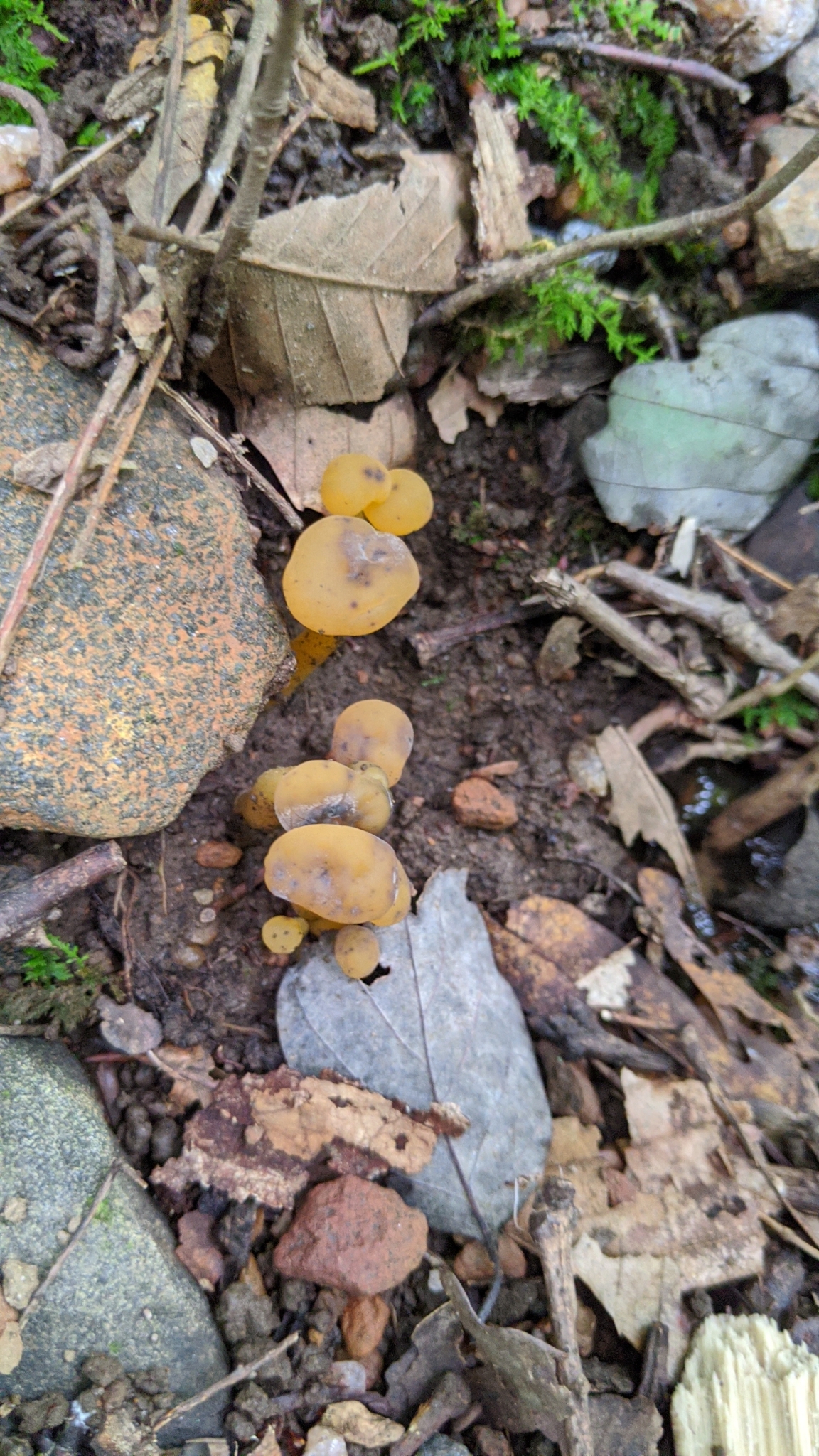

 Synonyms: Chicken Lips, Greencap Jellybaby, Leotia viscosa, Yellow Jelly Baby.
Synonyms: Chicken Lips, Greencap Jellybaby, Leotia viscosa, Yellow Jelly Baby.










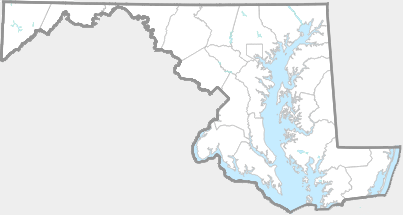
Leotia lubrica sensu lato includes both Leotia lubrica sensu stricto (Yellow Jellybaby) and Leotia viscosa (Greencap Jellybaby). As the common names imply, these two species were historically segregated based on the color of their caps. However, DNA-based phylogenetic investigations have found that these characteristics did not correspond to natural groups (Zhong and Pfister, 2004, Mycological Progress). Index Fungorum (May 2021) treats these species as synonyms. Additional taxonomic research is needed to determine the limits of Leotia lubrica.
Fruiting body: Yellow or orange-yellow, sometimes w/ olive tints; flesh soft, almost gelatinous. Fertile surface irregularly rounded/flattened, smooth/furrowed/brainlike, moist, rubbery. Stalk: Orange, scurfy or smooth, hollow, tapers up, sometimes flattened, often fused at base, flesh waxy (J. Solem, pers. comm.).
Found in groups or clusters in moss, duff, or decaying wood in hardwood or white pine forests.
There are 59 records in the project database.
| GA | AL | WA | FR | CL | MO | HO | BA | BC | HA | CE | PG | AA | CV | CH | SM | KE | QA | CN | TA | DO | WI | SO | WO |
